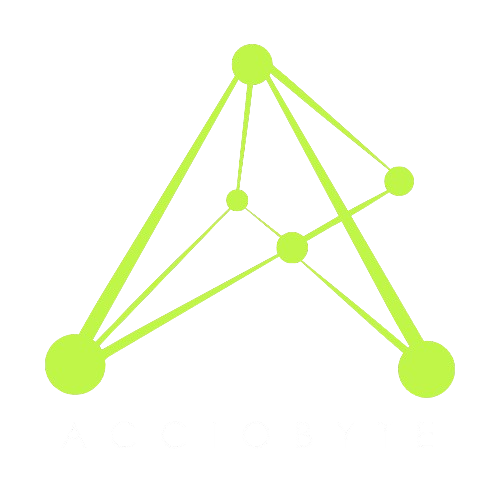















Flutter vs. React Native - Which One to Choose for Your App?
Introduction: The Rise of Cross-Platform Development
With the increasing demand for mobile applications, businesses and developers are constantly looking for efficient ways to build high-performance apps with a single codebase. Cross-platform development frameworks like Flutter and React Native have emerged as leading choices for building apps that run seamlessly on both iOS and Android. However, choosing between Flutter and React Native is not always straightforward, as both frameworks have their own strengths and weaknesses.
In this comprehensive guide, we will explore the differences between Flutter and React Native, their performance, UI capabilities, development efficiency, and overall suitability for different types of projects. By the end of this article, you will have a clear understanding of which framework is the best choice for your app development needs.
Understanding Flutter: Google`s Answer to Cross-Platform Development
Flutter is an open-source UI software development kit (SDK) created by Google. It allows developers to build natively compiled applications for mobile, web, and desktop from a single codebase. Flutter uses the Dart programming language and a rendering engine called Skia to create visually appealing user interfaces that perform exceptionally well across different devices.
One of the standout features of Flutter is its widget-based architecture, which allows developers to build complex UI components with ease. Since everything in Flutter is a widget, customizing the UI to match a brand`s identity is straightforward and efficient. The framework also comes with a rich set of pre-designed widgets that follow the Material Design and Cupertino styles, ensuring a consistent look across both Android and iOS platforms.
Understanding React Native: Facebook`s Contribution to Mobile Development
React Native, developed and maintained by Facebook, is another popular cross-platform framework that enables developers to build mobile applications using JavaScript and React. Unlike Flutter, which compiles to native code, React Native bridges JavaScript code to native components, allowing for a balance between performance and development speed.
React Native has gained massive popularity due to its ability to reuse code across platforms while still offering access to native functionalities through third-party libraries and native modules. This makes it an excellent choice for businesses looking to develop cost-effective applications without compromising too much on performance and user experience.
Performance Comparison: Which One Runs Faster?
When it comes to performance, both Flutter and React Native offer excellent results, but they achieve this in different ways. Flutter compiles its code to native ARM machine code using Dart’s ahead-of-time (AOT) compilation, which results in near-native performance. Since Flutter does not rely on JavaScript bridges, it delivers a smooth and responsive experience, making it ideal for applications that require high-performance graphics, animations, and real-time processing.
On the other hand, React Native uses a JavaScript bridge to communicate between JavaScript code and native components, which can introduce slight performance overhead, especially in complex applications. However, with recent advancements such as the Hermes engine and React Native`s Fabric architecture, performance has significantly improved, making React Native a viable option for most mobile applications.
UI & Design Capabilities: Which Framework Offers Better Aesthetics?
Flutter is known for its visually rich and highly customizable UI. The framework provides a wide range of widgets that allow developers to create stunning designs with smooth animations and transitions. Since Flutter’s rendering engine controls every pixel on the screen, it ensures that the app looks and behaves consistently across different platforms. This makes Flutter an excellent choice for applications that require a unique and highly customized user interface.
React Native, on the other hand, relies on native components for UI rendering, which means that apps built with React Native tend to have a more native look and feel. While this ensures a familiar user experience for both Android and iOS users, it can sometimes lead to inconsistencies in UI design due to differences in platform-specific components. However, with the use of third-party libraries like React Native Paper and NativeBase, developers can enhance the UI experience significantly.
Development Speed & Productivity: Which One is More Developer-Friendly?
Both Flutter and React Native aim to enhance developer productivity, but they do so in different ways. Flutter`s hot reload feature allows developers to make real-time changes to the code without restarting the entire application, speeding up the development process. Additionally, Flutter`s single codebase for both iOS and Android eliminates the need to write separate platform-specific code, reducing development time.
React Native also supports hot reloading, which makes the development process faster. However, since React Native relies on third-party libraries for various functionalities, developers may spend extra time configuring dependencies and resolving compatibility issues. React Native developers who are already familiar with JavaScript and React will find it easier to get started, whereas Flutter requires learning Dart, which has a smaller developer community in comparison.
Community Support & Ecosystem: Which One Has a Stronger Developer Network?
The success of any development framework depends largely on the strength of its community and ecosystem. React Native has been around longer than Flutter and has a massive community of developers, extensive documentation, and numerous third-party libraries that extend its capabilities. This makes it easier for new developers to find resources, tutorials, and support when working with React Native.
Flutter, despite being newer, has seen rapid growth and adoption. Google actively supports Flutter, and the framework has an extensive collection of plugins and packages available on pub.dev. While Flutter`s community is not as large as React Native`s, it is growing steadily, and the strong backing from Google ensures continued improvements and long-term viability.
Suitability for Different Types of Projects: Which Framework Should You Choose?
The choice between Flutter and React Native depends largely on the type of application you want to build. Flutter is an excellent choice for applications that require high-performance graphics, custom animations, and a unique design language. It is widely used for fintech apps, entertainment apps, and applications that demand seamless UI consistency across platforms.
React Native, on the other hand, is ideal for applications that prioritize quick development cycles, large-scale projects, and apps that need extensive third-party integrations. If your development team is already experienced in JavaScript and React, choosing React Native can reduce the learning curve and speed up the development process.
Conclusion: Making the Right Choice for Your App Development
Both Flutter and React Native have their own strengths and are suitable for different use cases. If you prioritize high-performance, smooth animations, and pixel-perfect UI designs, Flutter is the way to go. However, if you need a more mature ecosystem, easier JavaScript integration, and a faster time to market, React Native might be the better option.
Ultimately, the decision should be based on your project requirements, development team expertise, and long-term scalability needs. Whether you choose Flutter or React Native, both frameworks offer powerful capabilities that can help you build feature-rich, high-quality mobile applications.
💡 Need help deciding which framework is best for your business? Contact us today for expert consultation on mobile app development!
